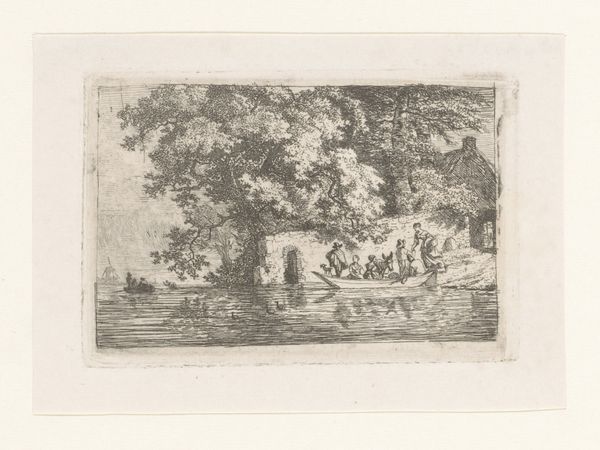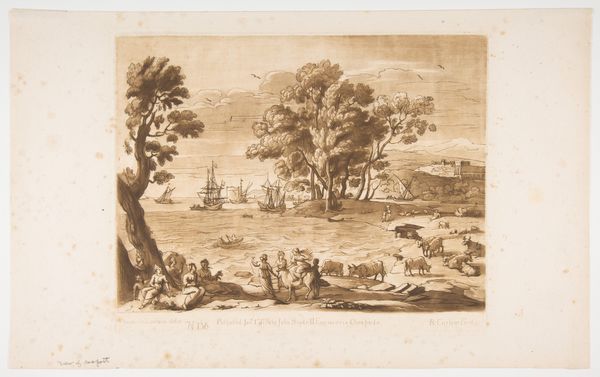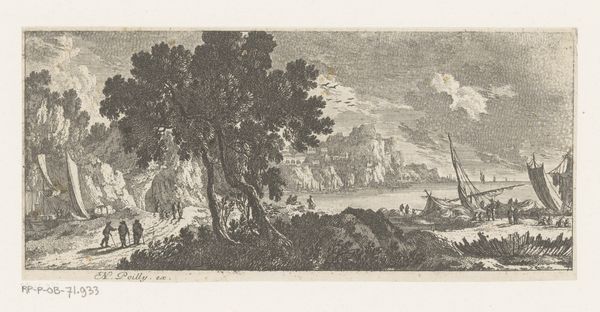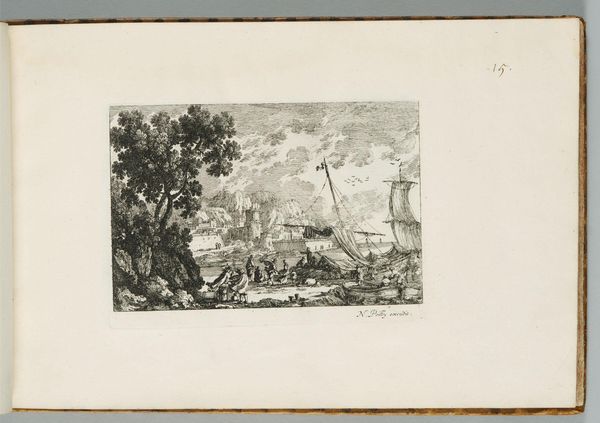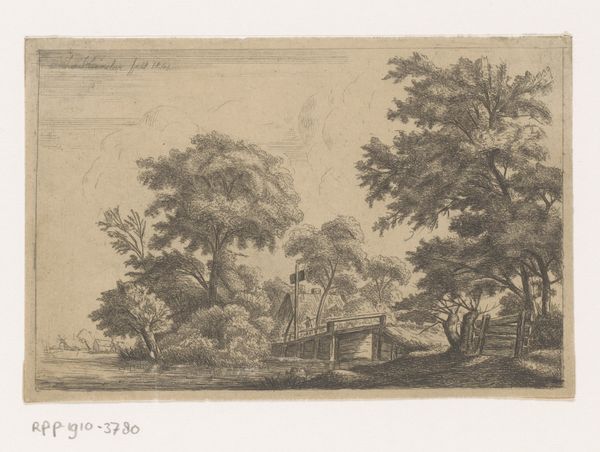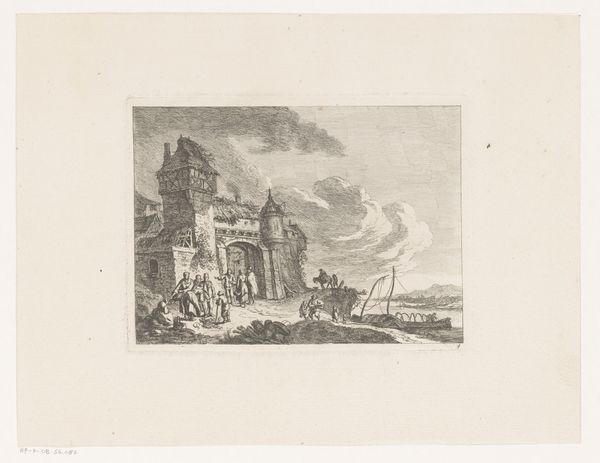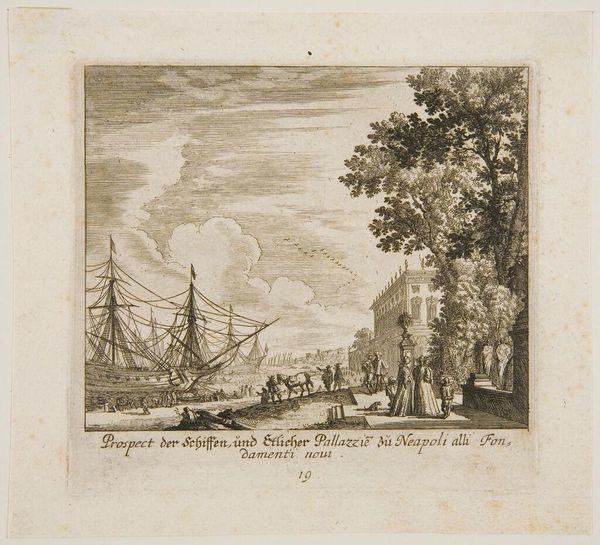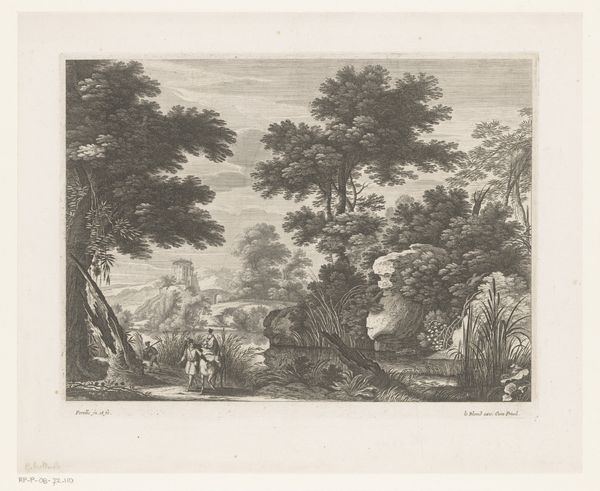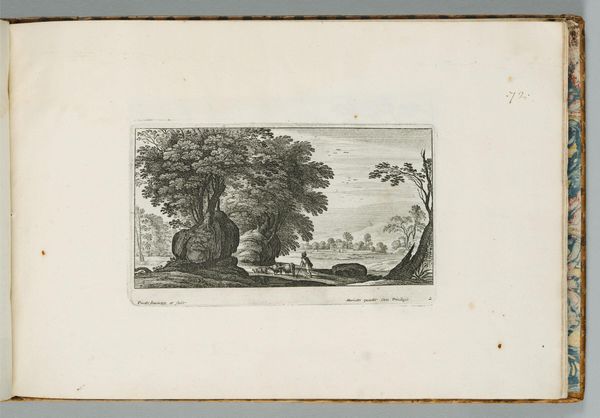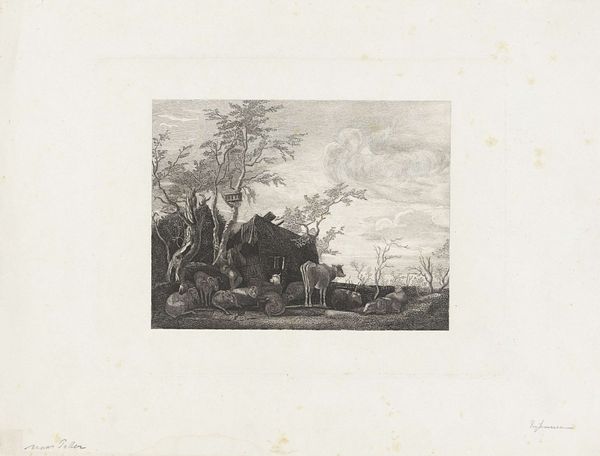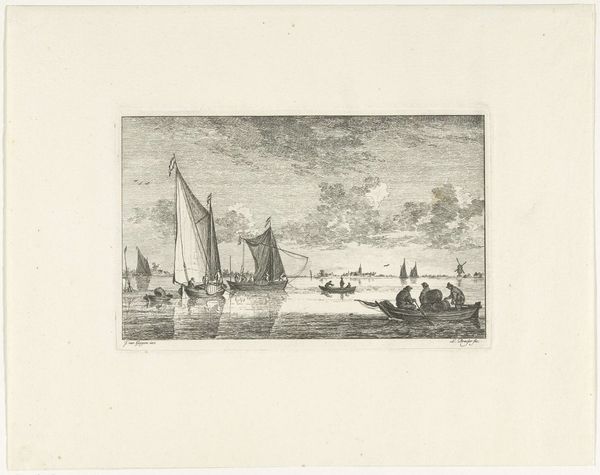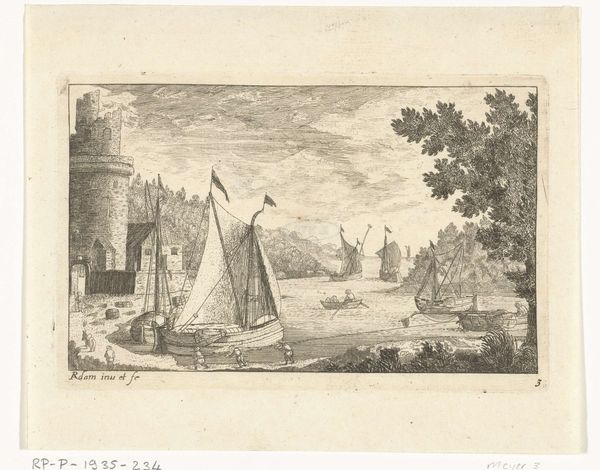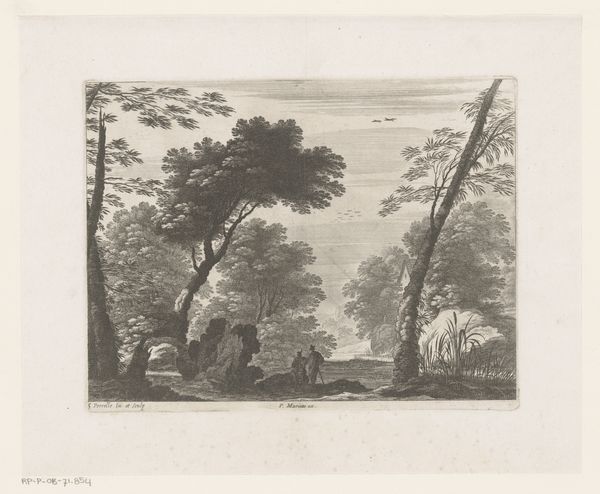
print, engraving
#
baroque
# print
#
landscape
#
river
#
genre-painting
#
engraving
Dimensions: height 139 mm, width 162 mm
Copyright: Rijks Museum: Open Domain
Henricus van der Winden made this small etching of a village square sometime in the mid-18th century. Etching is an indirect intaglio process; a metal plate, likely copper, is coated with a waxy, acid-resistant ground. The artist then scratches an image into the ground with a needle, exposing the metal. When the plate is immersed in acid, the exposed lines are etched, creating grooves. The longer the plate remains in the acid, the deeper the lines become, allowing for variations in tone. Ink is then forced into these lines, the surface wiped clean, and the image transferred to paper under high pressure. Notice the fineness of the lines, achieved by a skilled hand guiding the etching needle. Van der Winden captures the everyday life of the village; the church, the figures, the landscape. The quality of the print allows for the wide dissemination of images and ideas. This etching reminds us that what we now call ‘fine art’ depends on many forms of labor and flows of materials, blurring any distinction between design, craft, and art.
Comments
No comments
Be the first to comment and join the conversation on the ultimate creative platform.
